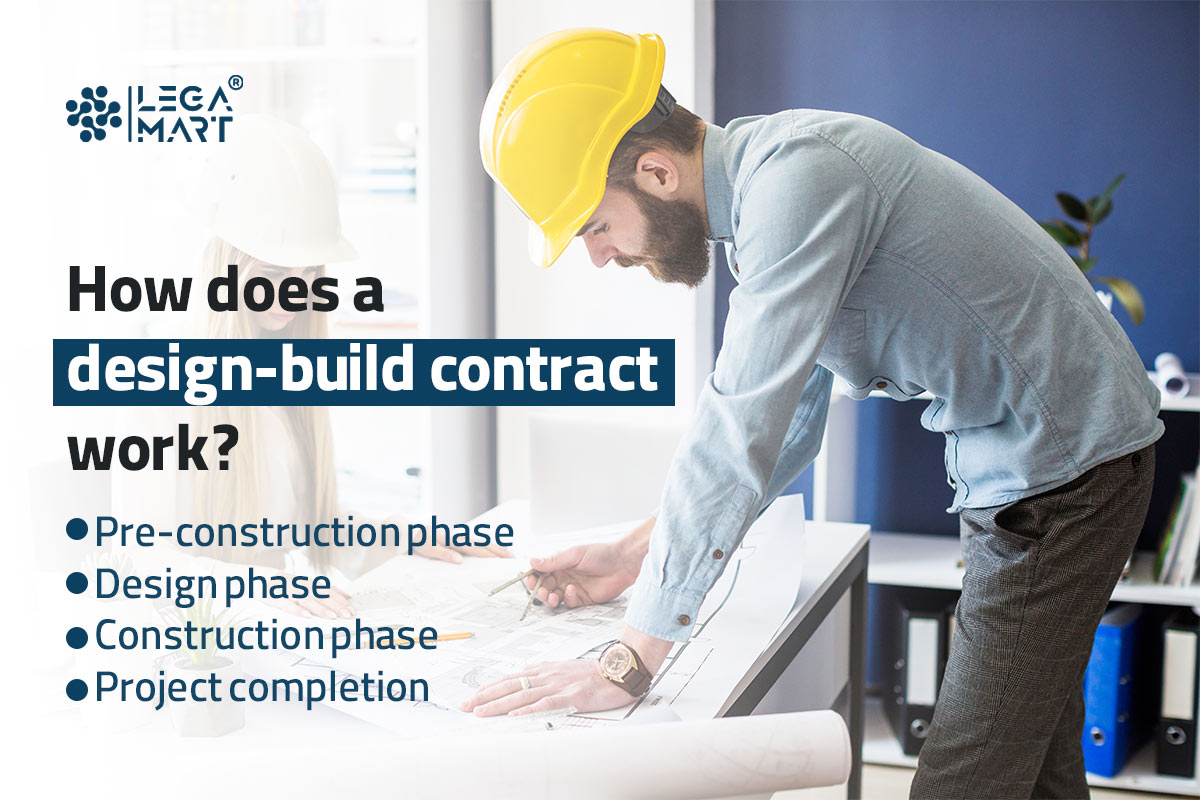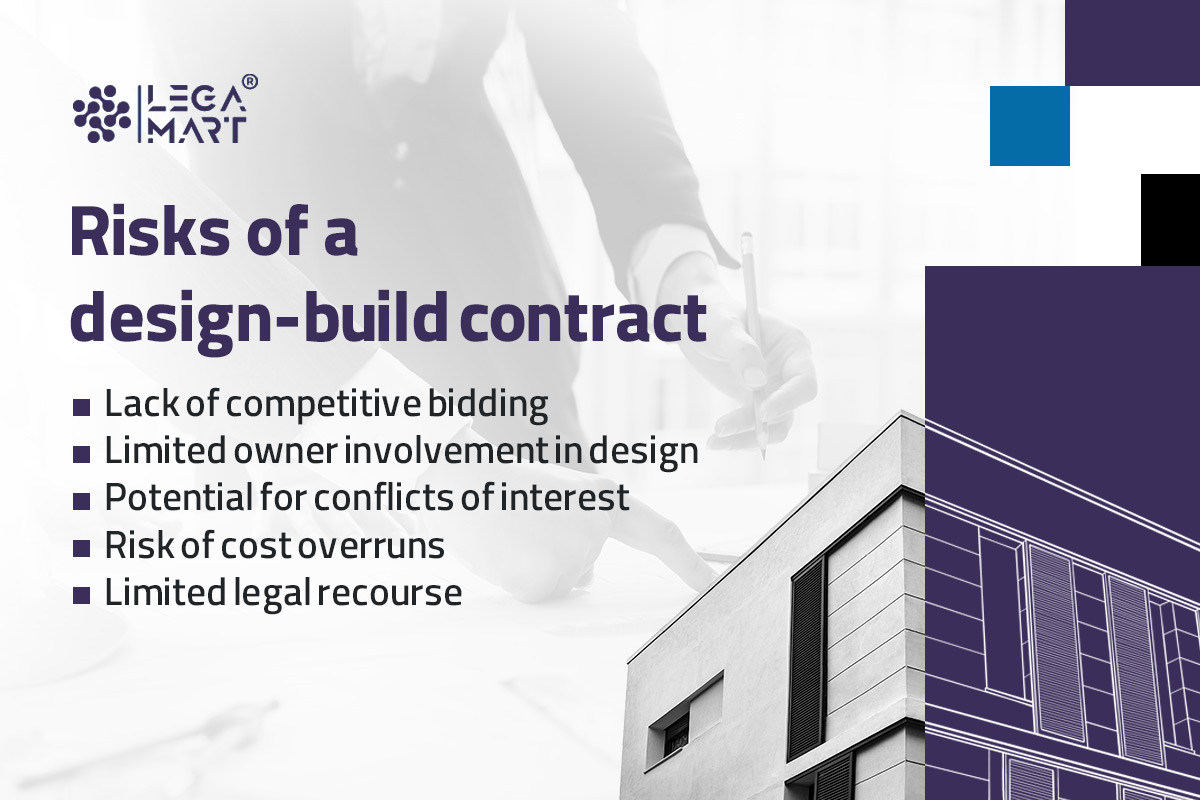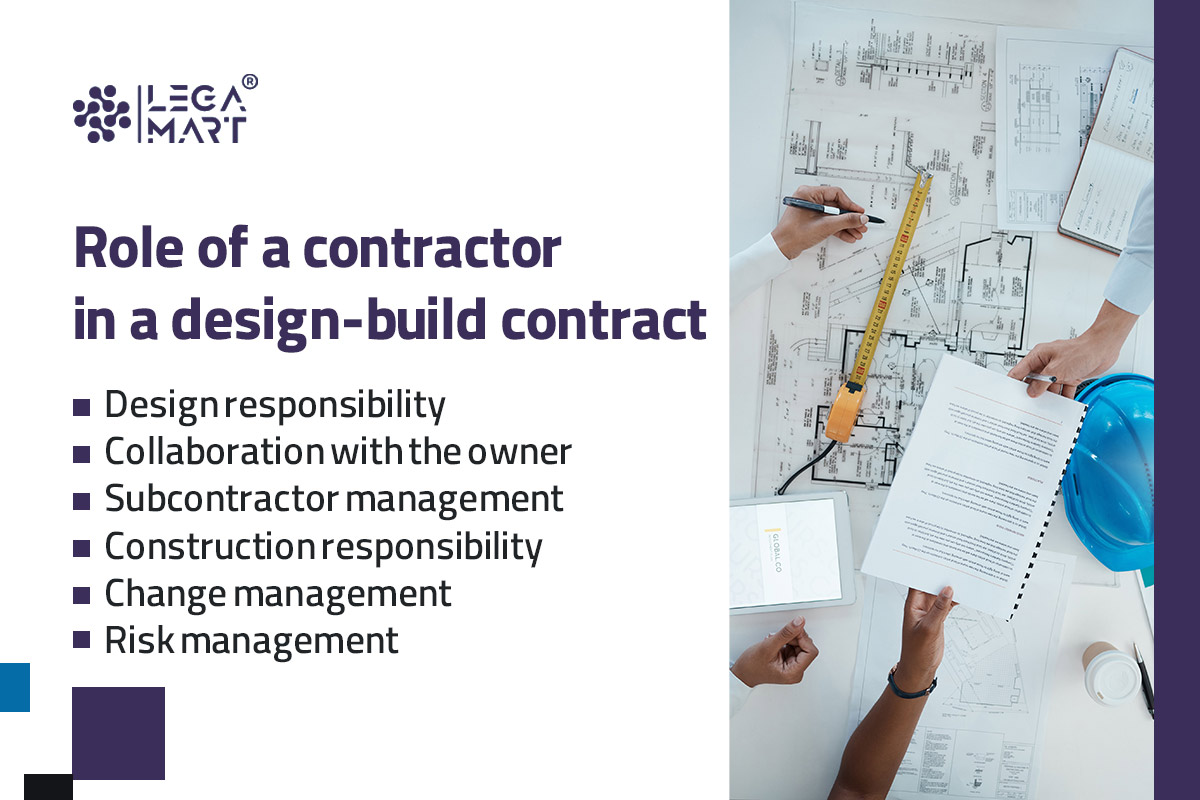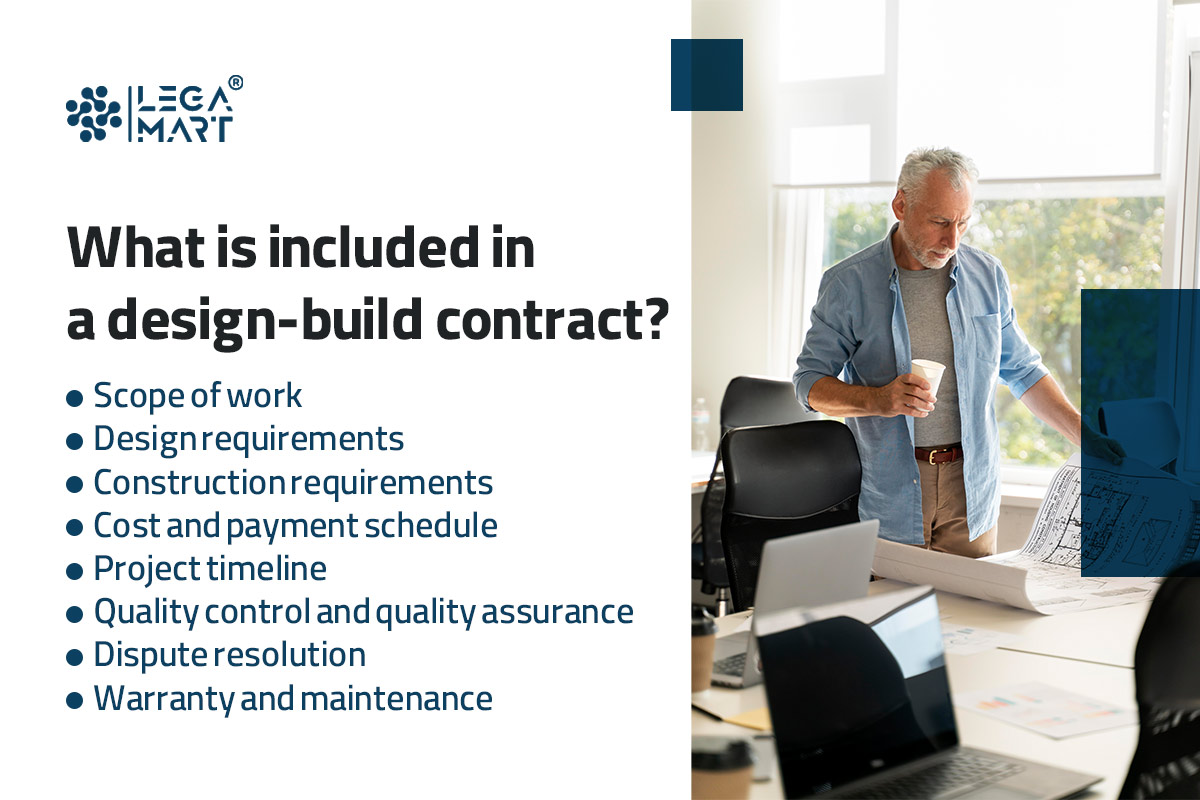Introduction
Here’s your introduction with the category subtly woven in:
Design-build is a transformative approach to construction projects that revolutionizes the traditional separation of design and construction functions. Unlike the conventional model that necessitates distinct contracts with architects, engineers, and construction professionals, the design-build method seamlessly integrates the design and construction processes. Under this innovative approach, a key area within Legal Practice & Specialization, the client operates within a singular budget, encapsulated in a comprehensive contract for services. This departure from the conventional model streamlines the project, fostering efficiency and collaboration among various stakeholders involved in bringing the client’s vision to fruition. The design-build concept represents a shift towards a more cohesive, integrated, and efficient construction project delivery.
What is a design-build contract?
A design-build contract is a type of construction contract in which a single entity, the contractor, is responsible for both the design and construction of a project. This means that the contractor is responsible for the entire project from start to finish, including the design, engineering, procurement of materials, and construction of the project.
In a traditional construction project, the owner hires separate contractors for the design and construction phases of the project. The owner is responsible for coordinating between the two contractors and ensuring the project is completed according to the design specifications. This can create communication issues, schedule delays, and cost overruns.
With this contract, the contractor is responsible for coordinating all aspects of the project. This approach can streamline the project and improve communication by reducing the number of parties involved. In addition, the contractor can work closely with the owner to determine project requirements and design specifications and can ensure that the project is completed on time and within budget.
The contractors typically have experience in both design and construction, allowing them to provide valuable input during the design phase of the project. They can identify potential construction issues early in the process and provide cost-effective solutions to ensure the project is completed on time and within budget.
Another advantage of this contract is that it reduces the risk of contract disputes. With a single entity responsible for the entire project, the owner has a single point of contact for all aspects, reducing the potential for disputes between contractors.
It is a construction contract approach where the design and construction of a project are contracted to a single entity. This approach can streamline the project, improve communication, and reduce the risk of disputes between contractors. However, it is important to carefully consider the unique needs and requirements of each project before selecting a contract approach.
How does a design-build contract work?

In this type of construction contract, a single entity, the design-build contractor, is responsible for both the design and construction of a project. Here’s how it typically works:
Pre-construction phase: the pre-construction phase typically involves the following steps:
- The owner identifies the project requirements and project goals.
- The owner selects a design-build contractor through a bidding process or negotiations.
- The design-build contractor works with the owner to determine requirements and develop a plan.
- The design-build contractor provides a cost estimate for the project.
Design phase: once the contract is in place, the contractor begins the design phase. This phase typically includes the following steps:
- The contractor works with the owner to develop project requirements and design specifications.
- The contractor develops a detailed design plan for the project.
- The contractor obtains necessary permits and approvals for the project.
- The owner approves the design plan.
Construction phase: once the design plan is approved, the construction phase begins. This phase typically includes the following steps:
- The design-build contractor procures materials and equipment for the project.
- The design-build contractor manages the construction process, including hiring subcontractors and managing the construction schedule.
- The design-build contractor ensures the project is completed according to the design plan and meets all applicable codes and regulations.
- The design-build contractor provides ongoing communication and coordination with the owner throughout construction.
Project completion: once the project is completed, the design-build contractor turns over the completed project to the owner. This typically includes the following steps:
- The design-build contractor conducts a final inspection of the project.
- The owner approves the completed project.
- The design-build contractor provides any necessary training to the owner on the operation and maintenance of the completed project.
- The design-build contractor provides any necessary warranty and maintenance services for the completed project.
In summary, a design-build contract combines the design and construction phases into a single contract. The design-build contractor is responsible for all aspects of the project, from design to construction, and provides ongoing communication and coordination with the owner throughout the process. This approach can streamline the project and reduce the risk of disputes between contractors.
Are Design and Build Contracts More Beneficial Than Traditional Contracts?
The overall cost of a contract or construction project is not necessarily determined by the contract type, be it traditional or Design and Build. While Design and Build contracts might offer some cost advantages by eliminating external project manager hiring costs, there are additional significant benefits to choosing the design-and-build approach. A key advantage is that, in a Design and Build contract, the contractor takes charge of all essential aspects of the project, including coordination. Thus, an experienced contractor can select the best and likely most cost-effective team of consultants, including architects, engineers, and sub-contractors, for a specific project type. Having an experienced contractor for a Design and Build contract provides clients with an advantage in foreseeing and addressing potential issues with the contract.
Time savings represent another crucial advantage of Design and Build contracts. In contrast to traditional contracts where a Project Manager might need extra time and effort to coordinate the entire team, a Design and Build contract progresses faster because the contractor can swiftly implement group decisions. Complaints can also be addressed promptly, and there’s no blame-shifting if mistakes occur.
Legal Issues Unique to Design-Build
In design-build projects, several legal issues distinguish them from traditional design-bid-build arrangements:
- Conflicts With Competitive Bidding Laws:
- Competitive processes in public projects may pose challenges, especially regarding price-focused bidding.
- Federal projects follow established procedures, but state and local laws may clash with design-build principles.
- Relationship Dynamics:
- Design professionals become teammates with contractors, raising questions about prime-subcontractor roles and entity structure.
- Legal and business planning decisions, such as forming joint ventures, corporations, or limited liability companies, become pivotal.
- Insurance/Bonding Problems:
- Insurance policies may exclude certain services, creating disparities and necessitating careful analysis.
- Surety bonds might not cover affiliated engineers’ design services, requiring comprehensive arrangements.
- Design Professional’s Standard of Care:
- Unlike traditional projects, design-builders are often held to contractor-like warranty standards.
- Contractual agreements can alter the standard of care, allowing a return to the typical “appropriate levels of skill and care.”
- Performance Warranties:
- Design-build projects often shift the responsibility to warrant the project’s performance from the owner to the design-build contractor.
- Precision in drafting warranties is essential, specifying criteria and testing procedures.
- Licensing Problems:
- Design-build contractors often collaborate with licensed design professionals due to state regulations.
- State laws on licensing practices vary, impacting how design-builders can offer engineering or architectural services.
- Entitlement to Change Orders:
- Design-builders are typically not entitled to change orders due to design problems since they are responsible for plans and specifications.
- Changes arising from the owner’s criteria, ambiguities or omissions may lead to adjustments.
- Cost-Plus Design-Build Projects:
- Cost-plus contracts alter dynamics, diminishing the design professional’s loyalty due to reduced contractor risk.
- Change order relevance decreases, and owner involvement and responsibility increase, impacting project dynamics.
Risks of a design-build contract

While a design-build contract can offer many benefits, some risks should be considered before deciding whether to use this approach. Here are some of the risks of a design-build contract:
Lack of competitive bidding: Since only one contractor is hired for the design and construction phases, there may be less competition than in a traditional construction project. This can lead to higher costs for the owner.
Limited owner involvement in design: In this, the design-build contractor is responsible for the design of the project. This means the owner may have less involvement in the design process and less control over the outcome.
Potential for conflicts of interest: Since the design-build contractor is responsible for both the design and construction of the project, there is a potential for conflicts of interest. For example, the contractor may prioritize construction speed and cost over design quality.
Limited ability to compare designs: The owner may not have the opportunity to compare different design options or to select the best design from multiple bids.
Risk of cost overruns: While a design-build contract can help reduce the risk of construction delays and change orders, there is still a risk of cost overruns if the contractor underestimates the cost of the project or if unexpected issues arise during construction.
Limited legal recourse: In a traditional construction project, the owner can hold the design and construction contractors accountable for their respective scopes of work. However, in a design-build contract, the owner may have limited legal recourse if issues arise since there is only one contractor responsible for both the design and construction of the project.
It’s important to carefully consider these risks before deciding whether a design-build contract is a right approach for a particular construction project. It may be helpful to consult with legal and construction professionals to assess the risks and benefits of this approach for a specific project.
Advantages of a design-build contract
A design-build contract can offer many advantages over traditional construction contracts. Here are some of the main advantages of a design-build contract:
Streamlined project delivery: The design and construction phases of a project are combined into a single contract. This can help streamline the project delivery process and reduce the project schedule.
Cost savings: There is often greater efficiency and cost savings than in traditional construction contracts. This can be especially true for complex projects where the design and construction phases are closely integrated.
Single point of responsibility: The design-build contractor is responsible for all aspects of the project. This provides a single point of responsibility for the owner and can reduce the risk of contract disputes.
Improved communication and collaboration: Better communication and collaboration between the design and construction teams. This can help improve project outcomes and reduce the risk of errors or misunderstandings.
Enhanced quality control: The contractor has greater control over the project quality. This can lead to better quality outcomes since the contractor is responsible for both the design and construction of the project.
Reduced risk of change orders: Since the design and construction teams are closely integrated, there is a reduced risk of change orders and construction delays due to design issues.
Overall, this contract can offer many benefits for construction projects, including greater efficiency, cost savings, improved communication, and better quality outcomes. It may be a particularly effective approach for complex projects where close collaboration between the design and construction teams is critical.
Role of a contractor in a design-build contract

In a design-build contract, the contractor plays a central role in both the design and construction phases of the project. Here are some of the key responsibilities and roles of the contractor:
Design responsibility: the contractor is responsible for the design of the project. This means that the contractor must have the necessary design expertise to create a design that meets the owner’s requirements and that can be built within the project budget and schedule.
Collaboration with the owner: The contractor must work closely with the owner throughout the project to understand the owner’s needs and preferences and ensure that the design and construction meet the owner’s requirements.
Subcontractor management: the contractor manages subcontractors and suppliers throughout the project. This includes coordinating the work of subcontractors, ensuring that they comply with project requirements and standards, and managing the project schedule and budget.
Construction responsibility: the contractor is also responsible for the construction phase of the project, including overseeing construction activities, ensuring compliance with safety and quality standards, and managing the construction schedule and budget.
Change management: the contractor manages changes to the design or construction scope during the project. This includes identifying potential changes, evaluating their impact on the project schedule and budget, and implementing changes in a timely and cost-effectively.
Risk management: The contractor must manage risks throughout the project, including identifying potential risks, developing risk mitigation plans, and implementing risk management strategies to minimize the impact of risks on the project schedule and budget.
What is included in a design-build contract?

A design-build contract is a comprehensive agreement that includes details about the design, construction, and delivery of a project. Here are some of the key elements that are typically included:
Scope of work: It outlines the project objectives, requirements, and deliverables. This includes the project’s purpose, goals, specifications, and specific design or construction requirements.
Design requirements: The design-build contract should include detailed design requirements, including plans, drawings, and specifications. The design requirements should specify the project’s technical details, including materials, systems, and equipment.
Construction requirements: The design-build contract should include detailed construction requirements, including schedules, budgets, and timelines. This should include the contractor’s obligations to provide materials, equipment, and labour for the project.
Cost and payment schedule: The contract should specify the total project cost and provide a detailed schedule outlining when payments are due and how they will be made. This should include provisions for change orders, contingency funds, and any other costs associated with the project.
Project timeline: The contract should include a detailed timeline that outlines key project milestones, including design reviews, construction start and completion dates, and other critical project milestones.
Quality control and quality assurance: The contract should include quality control and quality assurance provisions, including testing and inspection requirements and procedures for ensuring compliance with project specifications.
Dispute resolution: The contract should include provisions for resolving disputes between the owner and the contractor, including mediation, arbitration, or litigation.
Warranty and maintenance: The contract should include provisions for warranty and maintenance requirements, including the duration and scope of the warranty and any maintenance obligations the contractor will have.
Overall, a design-build contract should be comprehensive and include all details necessary to ensure that the project is completed successfully and in accordance with the owner’s requirements. The contract should also provide a clear understanding of the contractor’s responsibilities and the project’s timeline, cost, and scope.
Sample design-build contract
Design-build contract
This design-build contract (‘contract’) is entered into on [date] by and between [company name] (‘contractor’) and [client name] (‘owner’) to provide design and construction services for the [project name] (‘project’).
Scope of work: the contractor shall provide all labour, materials, equipment, and services necessary to complete the project, including but not limited to the design, construction, procurement, installation, testing, and commissioning of all components and systems required for the project as detailed in the plans and specifications.
Design services: the contractor shall provide all design services necessary to complete the project as described in the plans and specifications, including but not limited to architectural, engineering, and other design services required for the project.
Construction services: the contractor shall provide all construction services necessary to complete the project as described in the plans and specifications, including but not limited to site preparation, excavation, foundation work, framing, roofing, plumbing, electrical, HVAC, and all other necessary construction work.
Payment: the owner agrees to pay the contractor in accordance with the payment schedule attached hereto as exhibit a. The contractor shall submit invoices for payment in accordance with the payment schedule, and payment shall be made within [number] days of receipt of each invoice.
Change orders: the owner may request changes to the project scope of work or specifications by submitting a written change order request to the contractor. The contractor shall provide a written estimate of the cost and time required to implement the change order, and the owner shall approve the estimate before the change order is implemented. The contractor shall not make any changes to the project without prior written approval from the owner.
Warranties: the contractor shall provide a one-year warranty on all materials and workmanship provided for the project, commencing on the date of substantial completion. Any defects or deficiencies discovered during the warranty period shall be promptly corrected by the contractor at no cost to the owner.
Termination: either party may terminate this contract upon written notice to the other party in the event of a material breach of this contract by the other party. In the event of termination, the contractor shall be entitled to payment for all work performed and materials provided to the termination date, plus any reasonable costs incurred.
Governing law: this contract shall be governed by and construed in accordance with the laws of the state of [state], and any legal action arising out of or related to this contract shall be brought in the courts of [state].
Entire agreement: this contract constitutes the entire agreement between the parties and supersedes all prior negotiations, understandings, and agreements between the parties, whether written or oral.
In witness whereof, the parties have executed this contract as of the date first above written.
[contractor name]
By: __________________________
Name: ________________________
Title: _________________________
[owner name]
By: __________________________
Name: ________________________
Title: _________________________
Get help with a design-build contract
If you need help with a design-build contract, there are several resources available to you:
Hire a design-build contractor: if you are an owner, one of the best ways to ensure your design-build contract is well-structured and effective is to work with a reputable contractor. A good contractor will have experience negotiating and executing design-build contracts and can guide you.
Consult a construction lawyer: if you have concerns about the legal aspects of a design-build contract, you may want to consult with a construction lawyer. A construction lawyer can help you understand the legal implications of the contract and ensure that it is enforceable and meets your needs.
Use a contract template: several contract templates are available online that you can use as a starting point for your contract. However, it’s important to note that these templates may not be tailored to your specific project needs.
Overall, the key to a successful design-build contract is to work with experienced professionals and ensure that the contract is comprehensive and tailored to your project needs.
LegaMart is a global legal platform designed to connect individuals, startups, and businesses with qualified lawyers across jurisdictions. With a mission to simplify cross-border legal services, LegaMart provides users with access to a diverse network of vetted legal professionals who specialize in areas such as international law, corporate law, immigration, dispute resolution, and more.
By leveraging technology and user-friendly tools, LegaMart allows clients to search for lawyers by country, language, or legal expertise, submit their legal queries, and receive tailored legal solutions in a streamlined, efficient manner. The platform serves as a bridge between legal professionals and clients who need multilingual, multi-jurisdictional support — especially in today’s increasingly globalized legal landscape.
Whether you’re an entrepreneur launching a business abroad, an individual dealing with immigration paperwork, or a company navigating cross-border compliance, LegaMart aims to make legal help more accessible, transparent, and collaborative.




